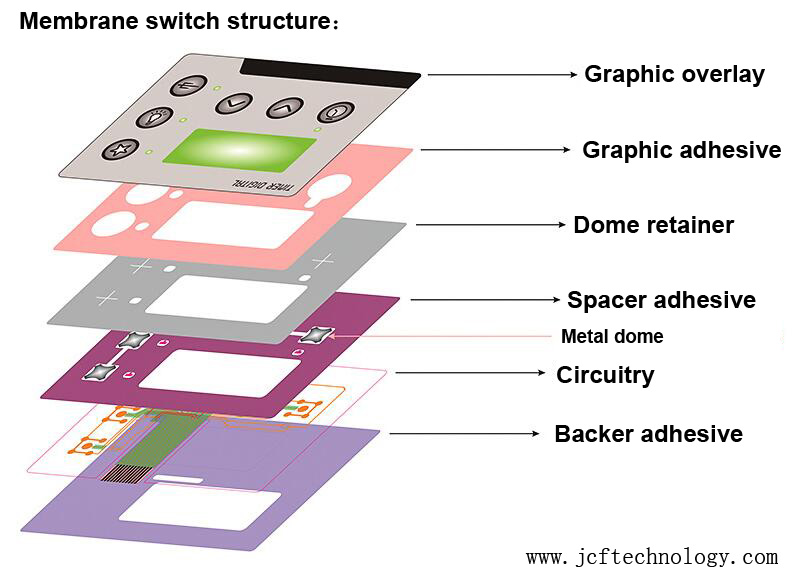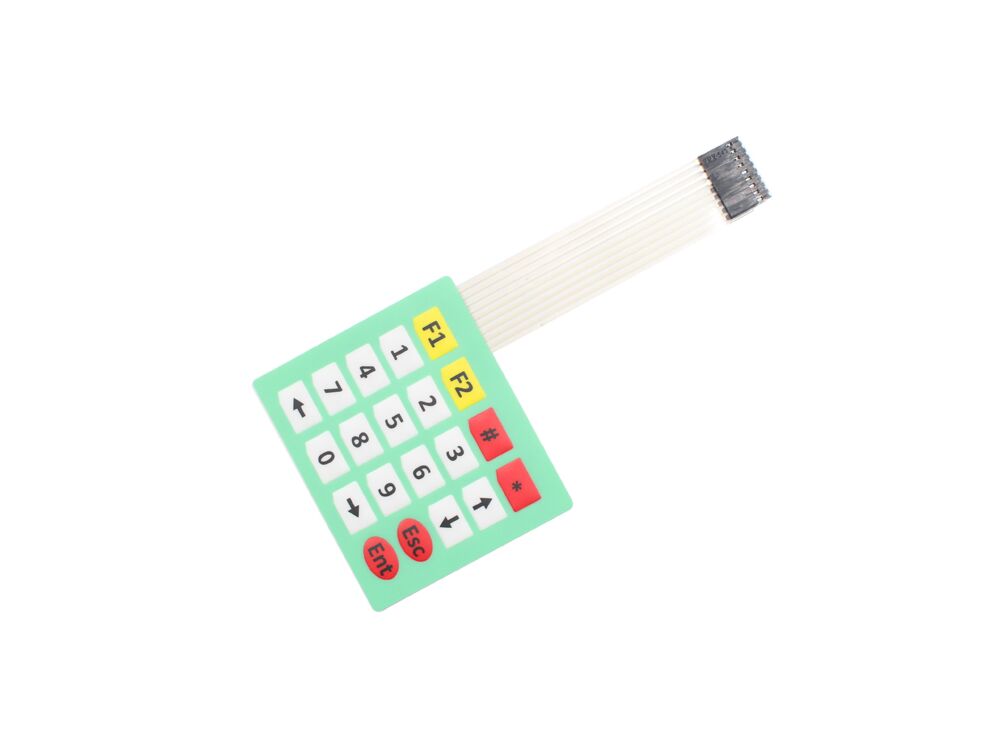Membrane Switch: A Comprehensive Guide to Its Uses and Applications
Membrane Switch: A Comprehensive Guide to Its Uses and Applications
Blog Article
Understanding Membrane Layer Switches Over: The Key to Sturdy and Reputable Controls

What Are Membrane Switches?
Membrane switches are an advanced option in the world of customer interface technology, combining performance and style effortlessly. These tools work as a user interface in between customers and digital systems, incorporating several components into a compact format. Usually built from versatile, thin layers of materials, membrane switches are developed to react to touch, enabling users to communicate with machinery and electronic devices effectively.
The primary components of a membrane layer button consist of a printed circuit layer, graphic overlay, and a spacer layer that avoids unintentional activation. The graphic overlay can be tailored to show brand identification or user preferences, boosting visual appeals while guaranteeing use. Membrane buttons are commonly utilized in various applications, including medical gadgets, consumer electronics, and commercial devices, owing to their toughness and resistance to environmental elements such as dampness and dirt.
One of the key benefits of membrane buttons is their capability to endure wear and tear, making them excellent for high-traffic settings. Additionally, they are light-weight and need minimal room, permitting innovative layouts in product growth. In general, membrane layer changes represent a sensible and effective choice for modern digital interfaces, weding technology with user-centric style principles.
Exactly How Membrane Layer Changes Job
The operation of membrane changes joints on a straightforward yet effective system that converts customer input right into electronic signals. When an individual presses the switch, the top layer deforms, allowing a conductive element in the circuit layer to make contact with an equivalent conductive pad on the bottom of the graphic overlay.
The design of membrane switches can differ, however they often integrate domes or responsive components to give feedback to the user, enhancing the overall experience - membrane switch. The materials utilized in membrane switches, such as polyester or polycarbonate, add to their longevity and resistance to ecological factors, including moisture and dirt. The printed circuits are usually encapsulated, which safeguards them from wear and tear over time.
Benefits of Membrane Buttons

In addition, membrane layer buttons are recognized for their toughness. Created from durable products, they are immune to dirt, dampness, and physical wear, which significantly extends their lifespan compared to traditional mechanical switches. This resilience makes them especially appropriate for high-traffic environments and applications requiring longevity.
Another significant benefit is the convenience of cleansing and upkeep. The smooth surface area of membrane switches minimizes dust buildup and is usually resistant to spills, making them excellent for setups that need regular sanitization.
Furthermore, membrane buttons offer a structured account, causing a thinner design that can be integrated right into different gadgets without adding mass. This function not only boosts the visual charm but additionally adds to a much more ergonomic product layout.
Applications of Membrane Switches
Functional and easy to use, membrane layer switches locate applications across a wide variety of markets, including clinical devices, customer electronics, and commercial devices. In the medical area, these switches are important to devices such as analysis you can try this out devices, person tracking systems, and infusion pumps, where dependability and ease of cleansing are important. Their ability to keep and endure rough environments capability makes them perfect for such applications.

In customer electronic devices, membrane buttons are made use of in products like microwaves, washing makers, and remote controls - membrane switch. Their smooth style permits for intuitive individual interfaces, boosting the overall user experience while supplying durability and resistance to tear and put on
Commercial equipment also takes advantage of membrane switches, especially in control panels for equipment and automation systems. These buttons supply protection against dust and wetness, making certain consistent performance in challenging atmospheres. Their adjustable functions enable makers to customize them to certain functional requirements, improving effectiveness and performance.
Selecting the Right Membrane Switch Over
When selecting a membrane layer switch, it is essential to take into consideration numerous variables that affect efficiency and suitability for particular applications. The primary considerations additional hints consist of ecological conditions, tactile responses, longevity, and layout requirements.
First, examine the operating atmosphere; switches revealed to wetness, chemicals, or extreme temperature levels call for certain materials to make certain long life and performance. Next, review the requirement for tactile responses. Depending upon user communication, some applications may gain from a responsive reaction to confirm activation, while others might choose a non-tactile layout for aesthetic reasons.
Longevity is one more crucial variable; membrane buttons ought to be designed to stand up to frequent usage, impacts, and abrasion. Make certain the chosen button can withstand the anticipated lifecycle, especially in high-usage circumstances.

Verdict
In verdict, membrane layer switches function as crucial elements in the design of sturdy and trustworthy control systems throughout different industries. Their small design, incorporated with durable building and customizable functions, enhances individual interaction while making sure longevity popular environments. The convenience of membrane switches over enables customized solutions that satisfy specific functional demands, strengthening their value in modern innovation. As industries continue to advance, the significance of incorporating reliable membrane button remedies try here can not be overstated.
Membrane layer changes stand for a vital facet of modern interface design, blending performance with strength in numerous applications.Membrane layer buttons are an innovative solution in the realm of user interface technology, integrating performance and style effortlessly. Normally constructed from flexible, thin layers of materials, membrane layer buttons are made to react to touch, making it possible for customers to connect with equipment and digital gadgets successfully.
The style of membrane switches can vary, yet they usually include domes or responsive aspects to supply comments to the user, enhancing the total experience.In verdict, membrane layer changes serve as essential parts in the layout of long lasting and trustworthy control systems across numerous markets.
Report this page